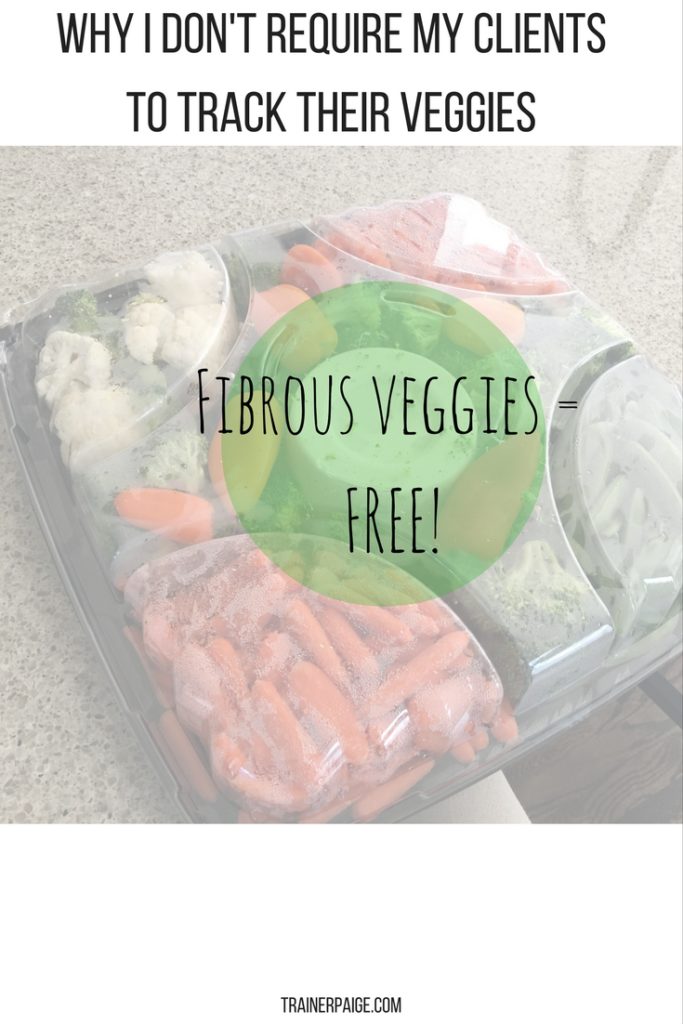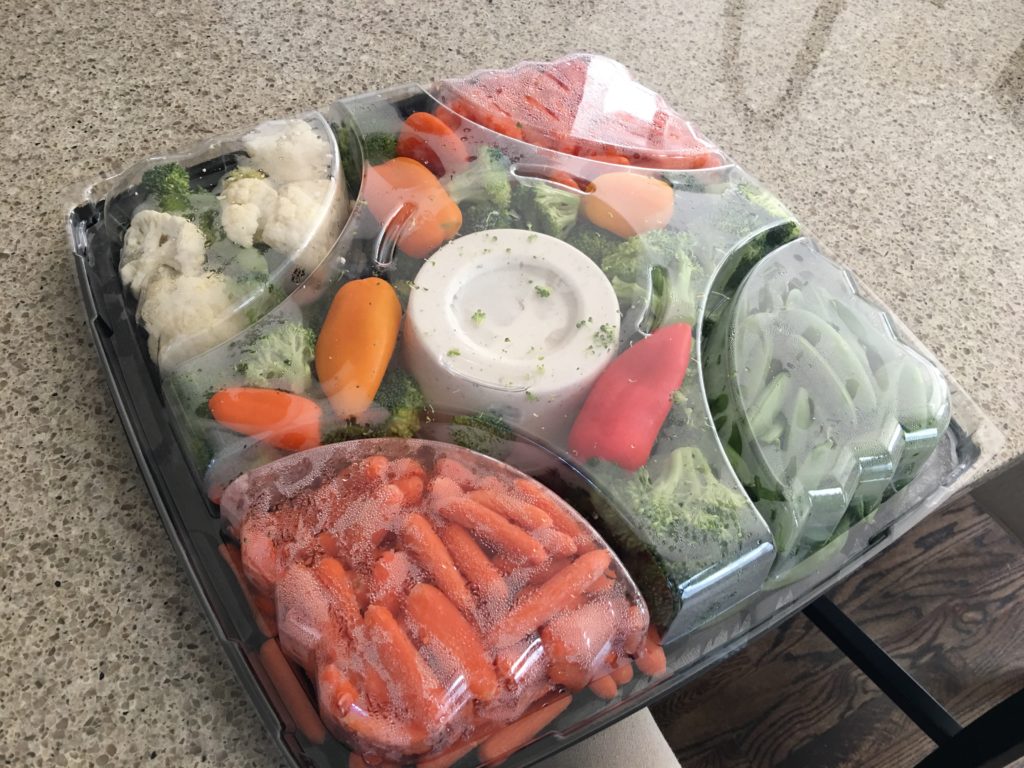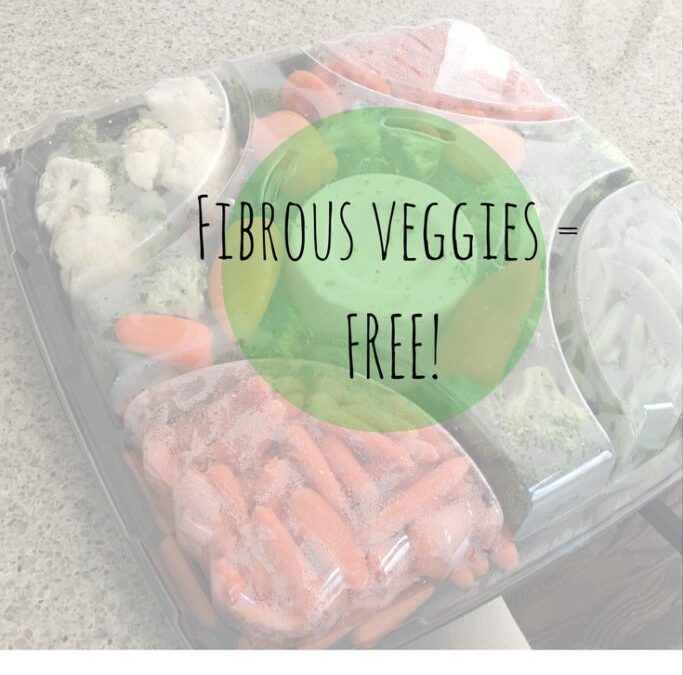Some thoughts and discussions from me.

I’ve found that their are two types of people in life:
those who can’t stand vegetables, and those who can’t get enough of ’em.
Luckily, I’m more toward that second camp of people. I have no problem eating at least one serving of vegetables at each meal, and in fact, today I ate brussels sprouts at breakfast!
I have an easy time getting my veggies in, and in fact that only time I have trouble getting them in is when I run out and there’s no food in the fridge! (Actually that was the case last night, we had these measly little spinach salads with our copycat Chick-Fil-A sandwiches.)
Regardless of whether you love your veggies – or you loathe them, today I want to talk about why I don’t require any of my clients to track their veggies.
In the video below, I’m going to explain:
- Two big reasons I don’t have my clients track their vegetables
- Why it leads to bigger results in the long-run
- How much of a difference this makes in macronutrient calculating
Tracking Macros (but not veggies)
If you haven’t tracked your macros before, you may be saying, “What does that even mean?”
When it comes to fat loss with my clients, I always start with a macronutrients and nutrient timing-based approach. This might sound complicated and overwhelming, but it’s really just making smart changes regarding the amount of protein, carbohydrates, and fat you’re eating, and their timing.
Some clients track every single gram of macronutrients — save for veggies and a couple other low-calorie condiments like ketchup and mustard — and then for some other clients, I don’t even have them track grams at all. We do change up macronutrients, but for some clients, tracking numbers and keeping track of grams or calories just drives them batty. For these clients, I don’t force them to track grams, we’re able to take a more portions-based or guidelines-based approach, and still see great results.
If your goal is fat loss, I do recommend you temporarily do some form of tracking, whether it’s grams or more estimation-based, because this gives you an awareness of what you’re eating now and how much, and how you need to adjust in order to see physical results.
And remember, it’s just data — only data! Your macronutrients, how much you’re eating and your dietary changes vs. the results that you see, whether those are strength, performance, or fat loss/weight loss/aesthetics. It’s all just data – and we shouldn’t attach any emotions to it.
So that said, I don’t have any of my clients track veggies, even those who are tracking macronutrient grams. I currently am not tracking my macros. I’m in maintenance mode, and maybe even a little bit of a surplus, which is fine. That’s where I want to be. But I also know about how much my body needs and I’m following my nutrient timing guidelines that make me feel good, as well as my intuitive eating cueing. But if I want to dial it in and see some fat loss, then I’ll track for a little while.
Why my clients don’t track veggies

(but the dip is another story ;))
1. Tracking macronutrients can drive some people batty, but tracking every single little thing you eat can drive everyone batty!
In my opinion, it’s not a healthy practice. Veggies are typically so low in calories and macronutrients anyway — it’s not worth tracking every single piece of broccoli that you put in your mouth.
Now, if you are training to compete in a bikini competition or other physique competition, that is different and I personally don’t work with those who are going to compete in figure or bikini. It’s not because I’m against it, it’s just because I don’t have experience in that realm.
Most people end up being so relieved to not have to count those vegetables that are higher in fiber and lower in calories. I’ve only had one client ever ask to count her veggies, and the rest are excited about the idea of eating unlimited veggies.
2. I encourage all my clients to flood their body with nutrients.
A great way to accomplish this is to increase the amount of vegetables you eat. Most of the time my clients have goals of fat loss, which means that they are, in one way or another, in a slight deficit, because the goal is fat loss.
So, eating those fibrous veggies between meals can help keep that fullness factor up, and you’re getting those important micronutrients while your body is in a slight deficit. Every extra nutrient you can get when you are in fat loss mode will help your performance in the gym and it will help you feel better. It really encourages you to get in those vitamins and minerals through vegetables.
I had a client ask a question about if I modify the prescribed number of grams of carbohydrates when veggies aren’t counted. So whenever I do my calculations for clients regarding their protein, fat, and carbohydrates grams, I already take into consideration that they’re not going to be tracking vegetables.
Typically, if you eat vegetables at every single meal — breakfast, lunch, and dinner — I recommend clients to have two servings at each of those meals. This covers your 6 servings a day. Most people usually get in like one in some meals, and two in others, so there is a range there. Veggies account for about an extra 100, up to 300 calories per day, which I factor into the equation when I’m doing my macro calculations.
Also, like I mentioned previously, I don’t have clients track typically low-calorie condiments like ketchup and mustard, and even a splash of unsweetened almond milk, just because that can get a little too granular, too.
So, to sum it up…Not tracking veggies
-
Gives a mental reprieve and allows you not be so restrictive and granular in your tracking.
-
Encourages you to up your nutrient intake by increasing your vegetables while in a deficit.
I hope that this was just a little bit helpful to you! Maybe if you’re considering tracking macronutrients now or in the new year, consider leaving those vegetables out. If you have any questions, like what qualifies as a “fibrous vegetable,” – or anything else, please comment below with that or any other questions you may have — I’d be happy to answer them! Have a beautiful Friday!
How many servings of veggies do you eat per day? Do you typically eat vegetables with breakfast?



Love this post! I don’t track macros, but if I did I doubt I’d count veggies. I’m also happy you said you had Brussels for breakfast because I just had some purple cabbage and yellow squash 🙂 Can’t get enough veggies!
Great explanation Paige! I loved working with you and the fact that I could eat all the veggies I wanted. Prior to working with you I had tried to count macros and included veggies… and I’d find myself skipping the brussel sprouts at dinner just so I didn’t go over my macros. With your plan I loved that I didn’t have to decide between veggies at dinner and toast with peanut butter after dinner… because I can tell you the toast with peanut butter would have won out every time!
Love this, Kate!! Hope you are doing well! XO
Great way of looking at things. I have tracked in the past but haven’t in awhile. The hardest thing was tracking veggies because I always wanted more. More spinach, kale, greens, cauliflower, beets, all the veggies. It made me go crazy. I think if I would have been tracking everything except veggies I would have had many more pleasureable experiences with tracking.